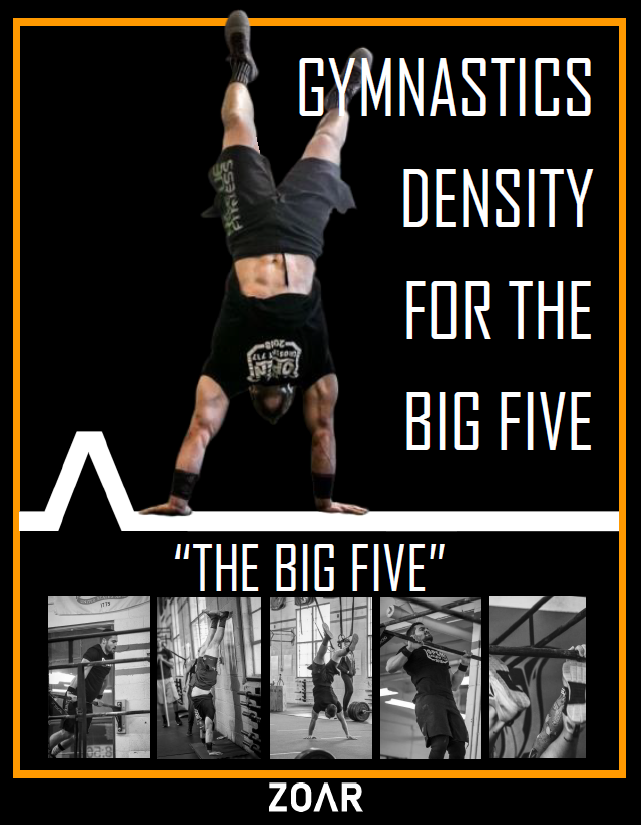Mobility – Strength – Skill
To maximize your potential, capacity and efficiency for Toes-to-Bar you must master it’s specific mobility, strength and skill demands: the three-headed monster every athlete must conquer. Let’s take on the monster one “head” at a time.
Mobility Requirements
There are two key positions requiring mobility in the toes-to-bar:
1) Arch Position: All kinds of kipping movements, including toes-to-bar, require a solid reverse “C” from head to toe. Creating a nice long loop in the body with no jagged angles allows for tissues to be loaded in a way that creates the most energy with the least amount of force = efficient. If the thoracic spine (upper back) and shoulders can’t open fully the athlete will make up the ground at the low back and rib cage, which significantly reduces efficiency.
• Kettlebell-Anchored T-Spine Stretch
• Elevated Cat Pose
• Chest Stretch
• Banded Lat Stretch
• Y Overhead Stretch on the Rings
2) Pike Position: The finish position of the Toes-to-Bar is more challenging for many people who cannot fold their body in half effortlessly. When a person finishes a rep they have both the feet and hands in contact with the bar, meaning that if a person can’t effortless bend down and touch their toes (with gravity’s assistance) that there is no way they are going to be able to many Toes-to-Bar when they are fighting gravity.
• Forward Fold Stretch
• Supine Hamstring Stretch
Strength Requirements
In order to solidly hit the positions needed and be safe the following strength baselines are suggested:
1) 60s Dead Hang: [view video] This is largely a test for grip strength, you should not be falling off the bar.
2) 10 Beat Kips: [view video] You should be able to hit hollow position and arch position without losing rhythm with ease. Some people struggle with these kips (and Toes-to-Bar) because they do not engage their lats and push down on the bar. This pushes the torso back away from the bar and allows the feet to come up easier.
3) 3-5 Seated L-Sit Raise: [view video] Sit with legs together and straight with hands by your knees on the floor. Can you push into the floor with your hands by your knees and get your feet off the floor? If not you need to work on strength in your abs, hip flexors and quads.
Skill Requirements
If you do not have all the Mobility and Strength requirements, time spent learning skill will be much less productive. Build the basics, then layer on top.
Stick to the basics and when you feel you’ve mastered them, it’s time to start all over again, begin anew, again with the basics, this time paying closer attention.”
The biggest thing holding people back from mastering Toes-to-Bar if they have all the strength and mobility is timing. Timing is developed through intentional practice. Unless you practice skills often they will never “click.” Put in the time. As you do here is what to focus on…
Technique Focal Points
(1) The Mount
The mount is simply getting onto bar. It sounds so mindless and it is for many people who just jump up and grab with bar with no awareness as to how they do so. This means that every single time they grab the bar they have a different amount of swing already going. Be as consistent as possible with the mount. A good baseline is jumping up to a bar from being just slightly behind it (zero to six inches). This will create a small swing, consistent kip swing that will be easy to control and predict.
Check out this great video by CrossFit Invictus on the Toes-to-Bar:
(2) Initiating the Movement
As soon as you grasp the bar think about “shoulders behind” and “feet low & in front.” You will then naturally be pulled into arch (that Reverse “C”) allowing you to begin your first rep using the tension of that “C.”
(3) Finishing the Movement
You can either choose to pike all the way to the bar with legs fairly straight (or) You can get your bent knees up by your elbows and finish with a knee-straightening kick to the bar. Either works well, it’s largely personal preference due to mobility restrictions.
(4) Body Motion Throughout
Another consideration is you should travel behind the bar as you get to the top half of the movement, and as your feet fall and eventually swing behind you, your upper body should travel forward in front of the bar.
During the raise in the toes-to-bar, think about pulling down on the bar with your lats, which will push your body back behind the bar, making it easier for your feet to reach the bar.
As your feet come down and behind you think about pulling your head through the hole in your hands. This will pull you into a pretty (Reverse “C”) arch position that will make the next rep much easier.
(5) Breathing
The only Breath Ratio that works for Toes-to-Bar is 1:1 (one rep per one breath cycle, inhale and exhale). Exhale as you lift your legs and compress your core and inhale as you drop your legs and momentarily relax your hips and abs. This is the only sustainable rhythm, which means if you have to break that breathing ratio & pattern, you will have to drop down from the bar to do so.
(6) Cycling Reps
The variation you are doing, the Hinge or the Scoop (see below), determines how your feet lower and how a rhythm is created.
With the Scoop, you actively pull your feet back and down to limit your swing. With the Hinge, you allow your legs to fall out in front. The key to cycling reps is making sure you counter the lower body movement, otherwise your legs falling creates a big swing (see the error “the double pulse”).
You counter the lower body swing by actively pulling your upper body forward as your legs fall. Opening up your shoulder and squeezing your glutes pulls you into an arch position, which act as both a counter for the swing and a slingshot (loading elastic tissues) for your next rep.
Listen: Developing Chest-to-Bar Pull-Ups [The Fitness Movement podcast #002]
Movement Mistakes
(1) The Double Pulse
If you are unable to string multiple reps together (or do so without a double pulse) it is likely because aren’t countering the fall of your legs by pulling your shoulder open into the arch position. One way you can counter the swinging action is by pulling your feet toward your butt on the way down (the “Scoop” technique). The other way is to pull harder into an arch with your shoulders (the “Hinge” technique). I talk about the Scoop versus the Hinge later in this guide.
Basically, if you are having a hard time with this mistake, you body is acting like the pendulum of a clock. The swing will always happen unless you counter you lower body action. Think of it as a seesaw, where you must balance opposing forces.
This is a comparison video.
1st Time: Dropping legs out in front = Big swing
2nd Time: Pulling heels toward butt = Little swing
3rd Time: Big swing is hard to control = Double pulse error
4th Time: Small swing allows for control = Stringing reps together
(2) No Lat Activation
Another reason why athletes have trouble is because they use lots of hip flexors and abs and very little lats. The goal of the toes-to-bar is to fold in half. If you fold in half you will have your hands near your toes.
That being said, most athletes think about moving their toes to the bar. This often results in a very vertical, semi-strict looking Toes-to-Bar. Rather, think about pushing your hands down to meet your feet or folding in half. This tends to activate the lats much more.
You will know you are activating your lats if you shoulders travel further back behind the bar. If your feet move up and down and your shoulders don’t move back and forward in space horizontally, you aren’t using your lats fully.
A helpful cue or analogy for an athlete struggling to activate lats is slamming a window at the initiation of each rep.

(3) No Hip Relaxation
Another common flaw in athletes performing Toes-to-Bar is failure to relax the hip flexors during the bottom portion of the movement. The number one way to destroy movement economy and sustainability is by constantly holding tension in a muscle during a movement when it is the prime mover.
For example, think about how much more of a leg pump and metabolic pain you experience when constantly moving up and down in a set of squats, versus locking out each rep for a half second at the top before the next rep to leg your legs “breathe.” The same thing happens frequently with the hip flexors and quads during toes-to-bar.
This flaw is rather easy to spot. The athlete will keep their hips slightly closed throughout the entire movement, even when in the arch position. This is often caused by a lack of mobility and a failure to understand the basic gymnastics positions of hollow and arch.
Beat Kips and Knees-to-Chest while fully opening the hip is a great place to start until you are able to go back to the full Toes-to-Bar while able to claim an open hip in the bottom of a Toes-to-Bar.
-
Product on sale
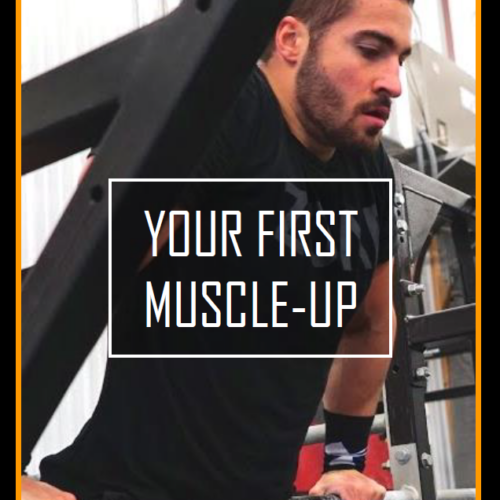 $67.95
$67.95 -
Product on sale
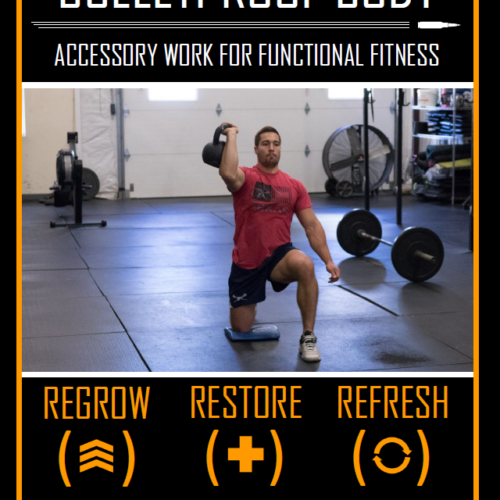 $67.95
$67.95 -
Product on sale
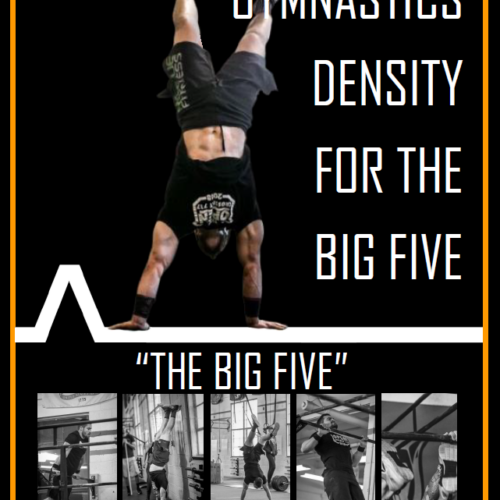 $67.95
$67.95
An 8-Step Progression
This progression is effective on two fronts.
One, it can help a beginner develop skill and strength over the course of weeks or months of practice so he or she can work toward being able to string a few unbroken Toes-to-Bar together.
And two, it can be useful to an advanced athlete to move through the drills rather quickly over the course of a few minutes to piece together a solid movement-specific warm-up.
Doing high volume Toes-to-Bar? I use the Bear Komplex 3-Finger Carbon Grips and also recommend them to my athletes.
Step 1: Dead hang + Scap Pull-ups
What?
Just hang. Grab hold of the bar and quite literally hang out. I also encourage you to shift every so often into an active hang via a scap pull-up. In other words, pull your shoulders away from your ears, moving your body closer to the bar.
Why?
A passive hang (only grip working) is an excellent tool for a number of things, from spine and shoulder health to grip strength. It’s the most basic of all gymnastics movements that takes place on a bar. And scap pull-ups are an excellent activation tool to fire up your lats and other muscles that exercise scapular control.
Step 2: Hanging Hollow & Arch Holds
What?
For the hollow hold, start in an active hang and contract your abs to push your shoulders back behind the bar. As a result your feet will go out in front of the bar. It’s just like the position of a hollow hold where only the small of your back and your glutes should be in contact with the ground. For the hanging arch hold, squeeze your butt, back and shoulders to push your upper body out in front of the plane of the bar. As a result, your feet will be behind you. You can play around with doing static holds or generating a controlled pulse, like video below demonstrates.
Why?
Many athletes, even very fit ones, struggle to make fundamental shapes. Being able to create long lines without any kinks or bends is key to gymnastic success. The best way to each this, in my experience, is going to the ground. Moving to the ground moves you horizontally and changes the way gravity acts on your limbs. Those who can create and maintain ‘pretty’ lines on the ground will find gymnastics movements on the bar much easier.
Step 3: Beat Kips
What?
Hold onto the bar and generate a controlled swing moving from the shoulders and core, not the hips. The shoulders pull the armpits open as you squeeze your glutes in the arch position. In hollow, the hands push down on the bar and you move back behind it by contracting your lats, abs and quads.
Why?
Once again, it’s about making shapes. This time we move back to the bar, back to vertical alignment. Those who can move through hollow and arch easily and consistently are able to string together many more Toes-to-Bar.
Step 4: Beat Kip + Lat Activation
What?
The start of each rep is just like the beat kip. The only difference is the added step of closing down the shoulder joint. After you reach the hollow position, push down on the bar with straight arms. Do not bend your arms, the elbows stay straight.
Why?
This one is about lat strength and reinforcing good position. And it doesn’t just apply to the Toes-to-Bar where you keep your arms straight the entire movement. It’s the same position for pull-ups and muscle-ups. In all of these movements the longer you pull with straight arms the more efficient and successful you will be.
Step 5: Knees-to-Chest
What?
Initiate a beat kip. Each time your move into the hollow position, you will lift your knees up towards your chest. As soon as they make contact, you will drop your legs as you pull your shoulders open into the hollow position. Work to be able to do one every rep, no pauses or double pulses allowed.
Why?
This will help develop the timing of the Toes-to-Bar with an entry level of hip, core and lat strength needed. It is also much easier for those who have mobility limitations.
Step 6: Knees-to-Elbows
What?
This is the same movement as the Knees-to-Chest, but you must close your shoulder angle in order to lift your knees higher.
Why?
Once again, this will help develop the timing of the Toes-to-Bar with the full range of motion. Those who have weak lats won’t be able to actively rotate their torso and will fail to get their knees high enough to reach the elbows. With the finish position of this movement being with elbows at the knees, all the athlete needs to do is kick their legs straight so their toes hit the bar. If you can do Knees-to-Elbows but can’t do Toes-to-Bar, it is likely a flexibility limitation in the low back, glutes and especially hamstrings.
Step 7: Toes-to-Bar (Adding Unbroken Reps)
Time to put it all together. The goal over time will be adding as many reps together at a time as possible. I would work Toes-to-Bar in unfatigued settings (i.e. Strength style of sets x reps, not Interval or Met-Con work) until you can do at least twelve unbroken, ideally 15 or more.
Those 15+ reps need to be strung together one after another, not allowing yourself to “double pulse.” If this happens move back to step 6 and re-read the focal point “Cycling Reps.”
Step 8: Toes-to-Bar (Adding Fatigue)
Once you have the ability to do relatively big, unbroken sets when you are not tired, you can being to add Toes-to-Bar into fatigued settings. This includes the ability to do them in Met-Con, Intervals and EMOMs. This is also an appropriate time to learn (and become proficient in) both variations of the Toes-to-Bar.
Listen: The King | Movement Density [The Fitness Movement podcast #001]
TTB Variations: Pike vs. Scoop
Version 1: The Pike
The Pike uses the momentum of the legs to get a big kip to close the hip with straight legs. From the top of the movement, unlike the Scoop variation, you drop your legs keeping them almost straight.
By dropping them in front of the bar the legs create horizontal momentum, which must be countered by the upper body going the opposite direction, with an active pull into the arch position.
Many beginners have issues handling this big kip because they don’t pull into arch. This creates a horizontal swing, like the pendulum of a clock. Working on a staying tight to create a quick change of direction is key and takes practice.
However, time spent learning this variation is well spent because it makes the Toes-to-Bar much more sustainable for big sets at a slightly slower cycle speed.
Version 2: The Scoop
The Scoop has a more vertical line of action than the hinge. This as two implications. One, you can cycle reps faster in for a sprint workout. Two, because there is less horizontal momentum beginners often can control the swing and learn to string multiple reps using this technique.
Rather than letting the feet swing out and around from the top of the Toes-to-Bar like the Pike, you pull your feet towards your butt and then extend them back behind the plane of the bar. You then scoop your feet and initiate the next rep, which ends up looking like tracing a little loop.
Because of the vertical nature of the Scoop and the fact that the midline isn’t loaded as effectively as the Pike, you will likely have to work slightly harder to extend the knees and kick the bar.
Athletes who have been working Toes-to-Bar progressions with Knees-to-Elbows will recognize the skill transfer because the Scoop requires bent knees up by your elbows and ends with a knee-straightening kick to the bar.
This technique is very quick for workouts with low rep counts and it is often much more taxing on the hip flexors for many reps.
Subtle Variations
Different types of workouts can demand different subtle variations of the Toes-to-Bar. This is most easily explained through the following sample workouts.
Workout #1
4 Rounds
-12 Toes-to-Bar
-400m Run
Considerations: Holy hip flexors. At no point in this workout do they get a break. On the other hand your lats are used minimally. Therefore, use a bigger push down on the bar to use more lat strength and just use those hip flexors a little bit to finish this movement. Consider the Hinge technique to save your hips.
Workout #2
5 Rounds
-6 Pull-ups
-8 Toes-to-Bar
-12 Calorie Row
Considerations: Lots of lats here. You will want to save that upper body pulling strength for the pull-ups meaning you want to use the least amount of lat possible in the toes-to-bar. Having less back swing (or push behind) means less lat engagement. To do this think about having a more vertical line of action using your hip to initial the movement. This more easily accomplished by using the Scoop technique.
Workout #3
3 Rounds
-30 Toes-to-Bar
-30 Calorie Assault Bike
Considerations: High volume. The Toes-to-Bar are going to be your limiter and low you down. You want them to be as efficient as possible. For a higher level athlete this is usually going to mean the Pike technique. It is slightly slower, but that doesn’t matter much if you can keep moving for longer.
Workout #4
3 Rounds
-7 Toes-to-Bar
-14 Calorie Assault Bike
Considerations: This workout is a sprint. You want to move through the reps as quickly as possible. When thinking about sprinting Toes-to-Bars the fastest way between two points is a straight line. Think straight up and straight down with just a little Scoop at the bottom to get the momentum going.
Top Accessory Exercises
What are the best exercises to build strength for Toes-to-Bar?”
Specific Strength (Hip-Lat-Core Compression)
• Strict Knees-to-Elbows (or) Strict Toes-to-Bar (Level I and Level II) nothing beats the strict version
Hip & Ab Strength (Midline)
• Hollow Holds (the best starting place)
• Seated L-Sit Raises (or) L-Sit Holds (this will expose any mobility restrictions as well)
• Tuck Holds
• Hanging Knee Raise (or) Hanging Leg Raise (Level I and Level II)
Lat Strength (Straight Arm Pulling)
• Straight Arm Ring Row (another great transfer drill to Muscle-Ups)
• Banded Lat Row (also great for deadlifts and Olympic lifting)
• Lat Activations (probably the most specific of the lat exercises for the TTB)
• Ski Erg Sprints (a personal favorite lat / triceps exercise)
Grip Strength
• Dead Hang (several hang of 60-90s in great for not only grip but shoulders)
• Plate Pinch (involves the thumb more than other grip exercises)
• Farmer’s Carry (or) Suitcase Carry
Are your gymnastics movements holding you back from reaching your potential?
Statistics show five movements are far and away the most likely to show up in local competitions and online qualifiers like the Open.
That’s why this program focuses on improving “The Big Five” – Muscle-Ups, Handstand Push-Ups, Handstand Walks, Toes-to-Bar, and Chest-to-Bar
If your capacity in these movements is holding you back from taking your fitness to the next level, this program is for you!
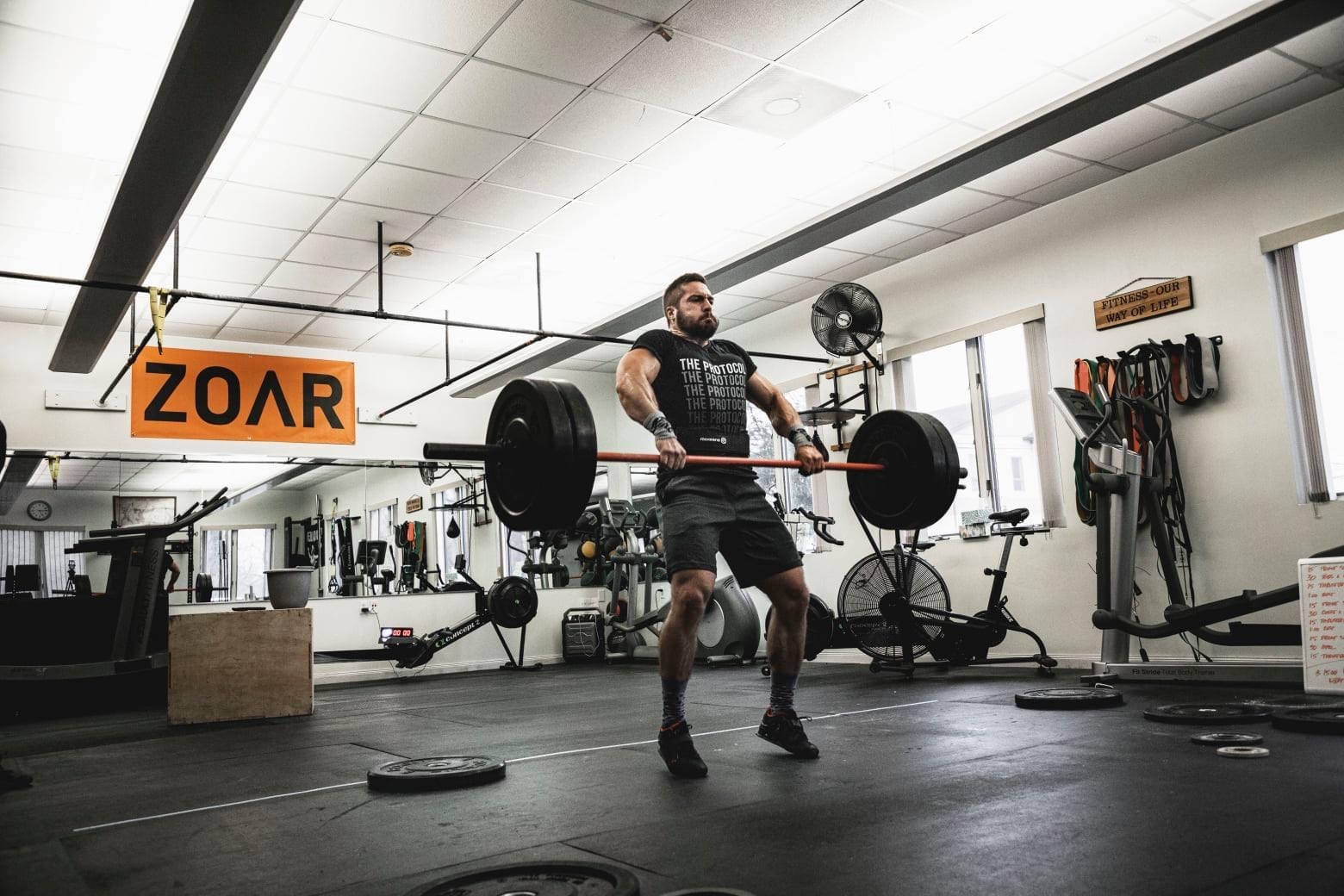

Also in the Movement Library: Pull-Ups & Chest-to-Bar Pull-Ups
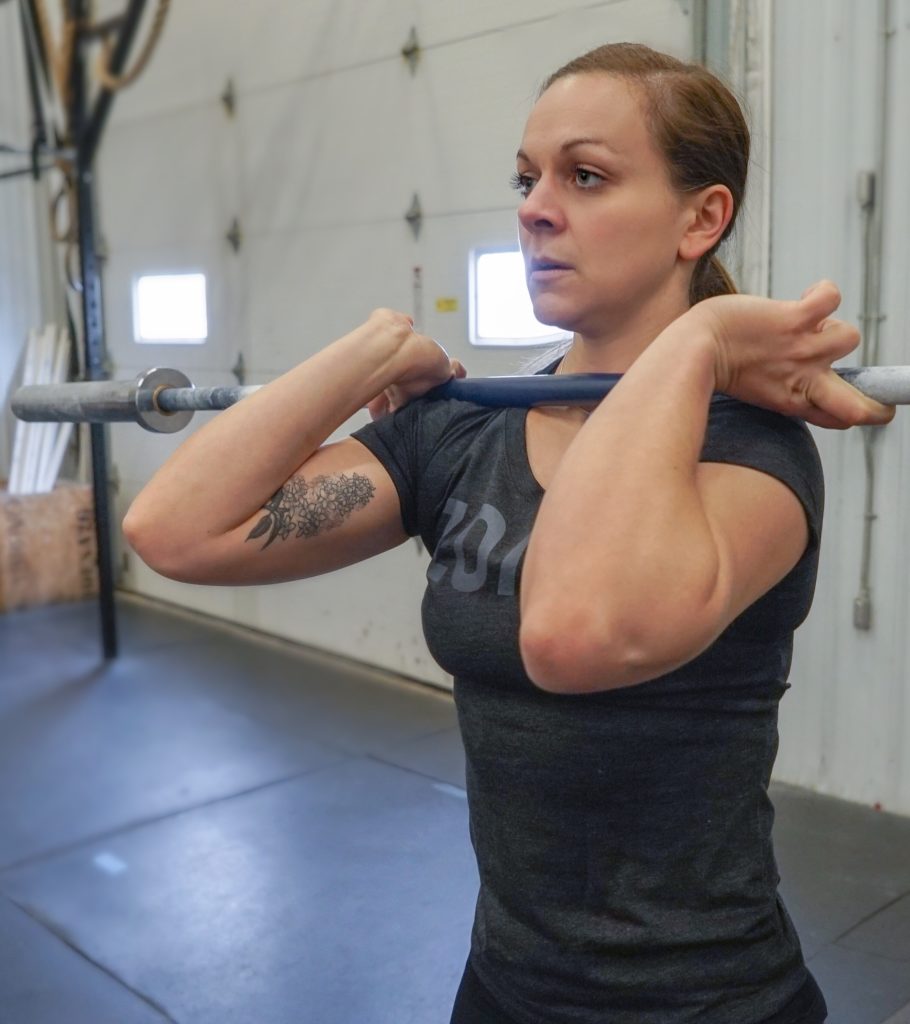
1-on-1 Remote Coaching
• Customized workouts tailored to your needs
• Video calls with your coach every training cycle
• Video analysis – having “eyes” on your technique
• Strength & Energy Systems Testing
• Access to Pro (Articles, The Vault, The Protocol)
• No commitment. Pay monthly. Cancel Anytime.

